
A Visit to Herjólfstown - Herjólfur's Viking House in the Westman Islands


It is a replica of Herjólfsbærinn - Herjólfur's old farmstead; a hypothetical farmstead of what might have been one of the oldest human habitation signs in my country Iceland. It is believed to be the first rock house in Iceland.
Top photo: By Herjólfsbærinn town
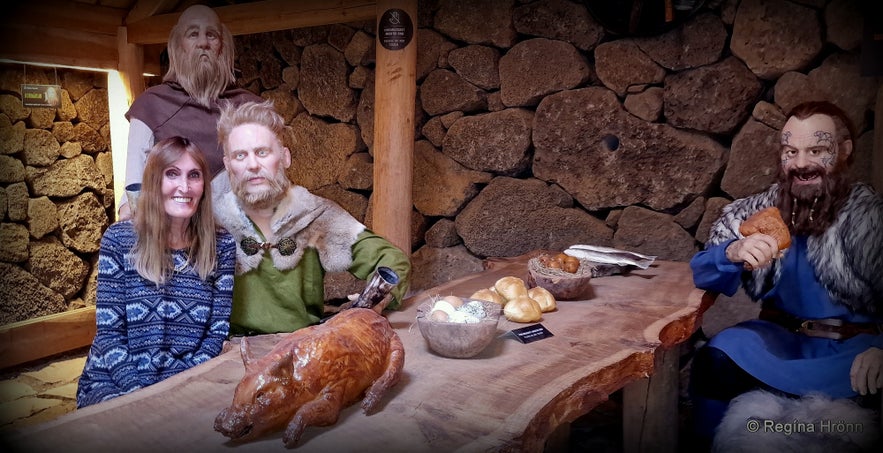
With the son of Ragnar Loðbrók, Ubbe, and King Haraldur hárfagri - the fairhair
In spring 2023 a Viking exhibition opened in Herjólfsbærinn, which is a great addition to Herjólfsdalur valley. On my last visit to the Westman Islands, I checked out the new exhibition.
But before I tell you about the exhibition, let's start with a little bit of history.
Remains of the settlement farm were discovered in 1924 when the first director of the National Museum of Iceland was doing excavation work in Herjólfsdalur valley.
He discovered 3 ruins; one longhouse (the oldest type of Icelandic turf house) and two smaller houses.
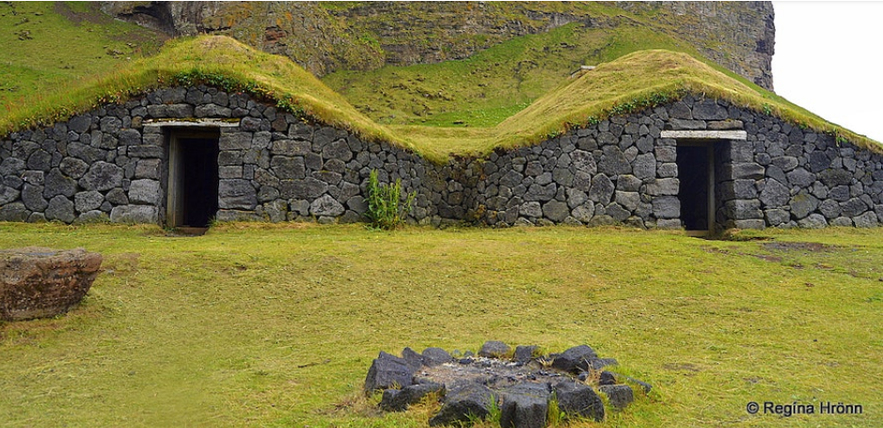
It might be the longhouse of Herjólfur Bárðarson, the first settler of the Westman islands in around the year 900 AC.
Now there have been speculations that these old ruins might even predate Herjólfur's settlement farm and date back to the first part of the 9th century.
Extensive digging took place in Herjólfsdalur valley from 1971-1980 - being delayed by the volcanic eruption in 1973. The remains of 8 houses were discovered from 4-5 building periods where you will now find the golf course.
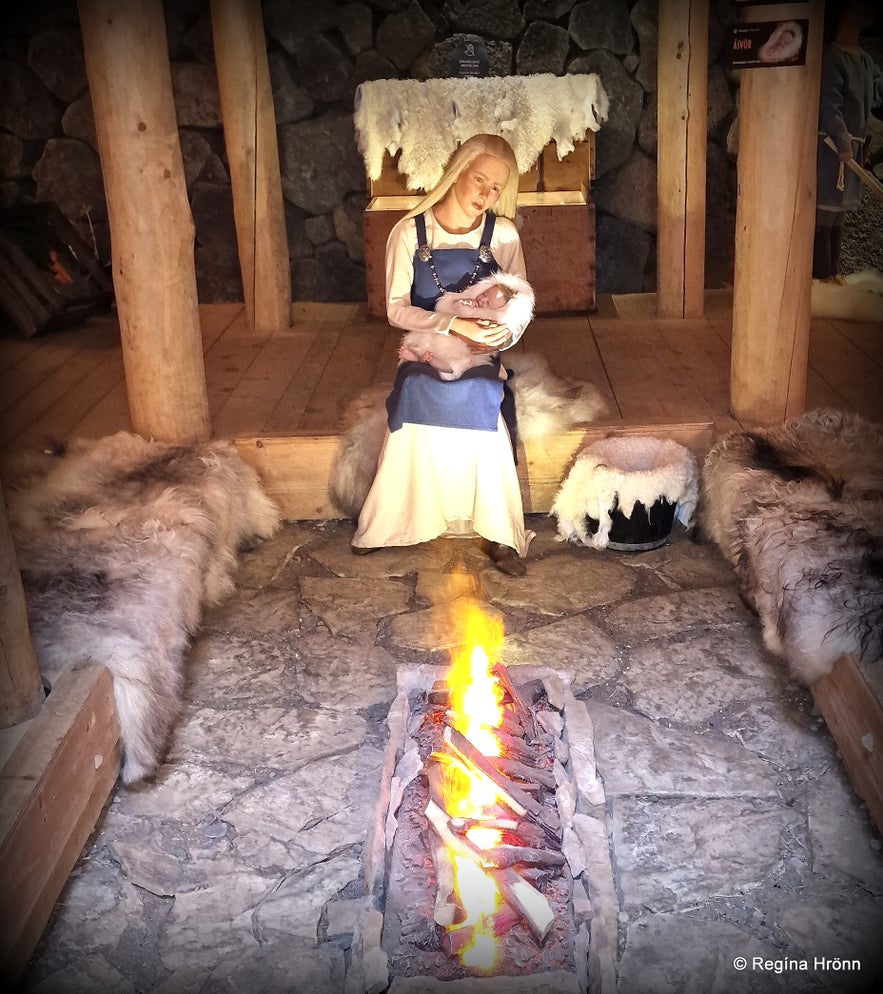
Herjólfur's wife, Freyja, and child Ásvör by the longfire in Herjólfsbærinn town
In 2005 a hypothetical farm was built in Herfjólfsdalur valley to the liking of the farm that stood here at the beginning of the 10th century. The hypothetical farm is a longhouse and an outhouse, built with rocks, wood, and turf.
The hypothetical farm was built by Herjólfsbæjarfélagið and donated to Vestmannaeyjabær in 2020. I first visited Herjólfsbærinn back in 2013.
Back then we could enter it and have a look around. Inside were some tables and benches, but apart from that it was empty.
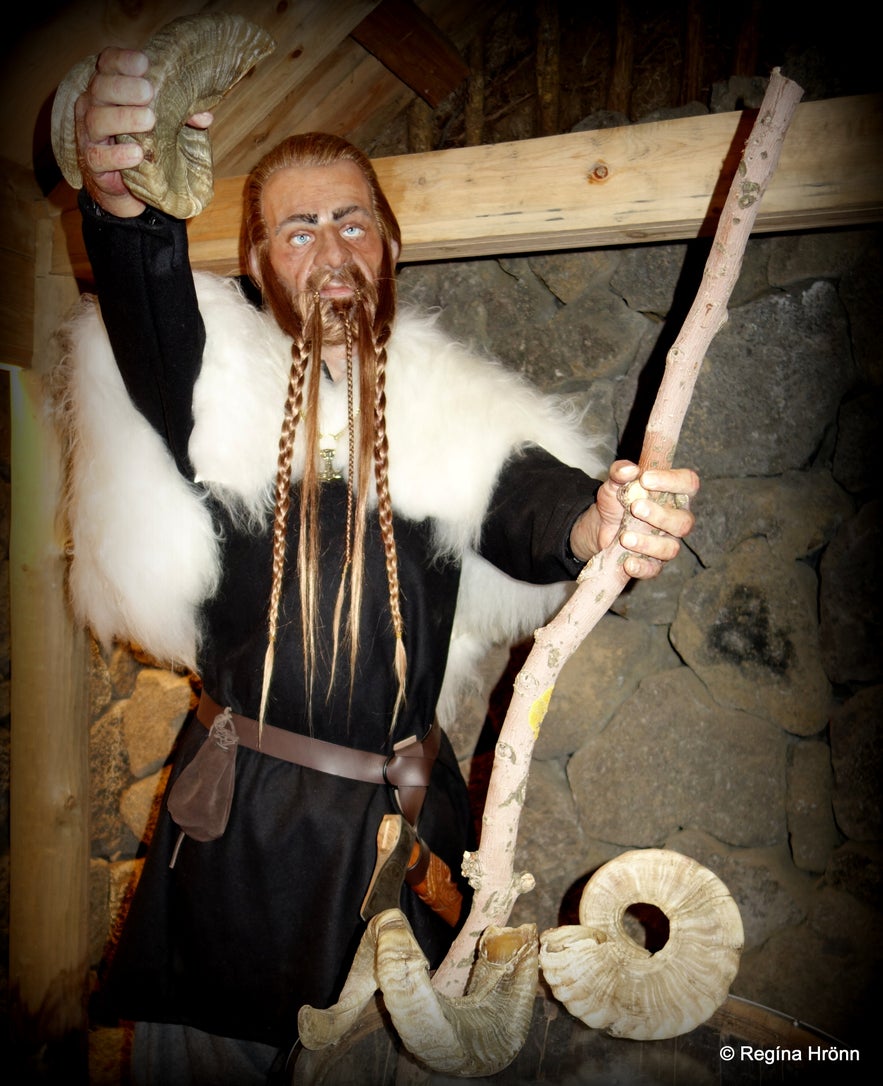 Herjólfur the settler
Herjólfur the settler
In 2023 a Viking exhibition was opened in Herjólfsbærinn, so it is much more fun visiting it and having a chat with the Vikings.
It is a conjectural exhibition about the family and friends of the settler Herjólfur and shows us what family life could have been like in the Westman Islands around the year 900.
 The daughter of Herjólfur
The daughter of Herjólfur
We know very little about Herjólfur and his family but this is what is written about the settlement of the Westman Islands in Landnáma Sturlubók - the Book of Settlement In Iceland: "Ormur ánauðgi, the son of Bárður Báreksson, the brother of Hallgrímur sviðbjálki, first settled the Westman Islands. Before that time there was a fishing station, but little activity in the wintertime or in meadows. His daughter was Halldóra, the wife of Eilífur Valla-Brandsson".
Here the brother of Herjólfur, Ormur ánauðgi, is said to have settled the Westman Islands. There seems to be a mix-up in Sturlubók between Ormur ánauðgi, the brother, and Ormur auðgi, the son of Herjólfur.
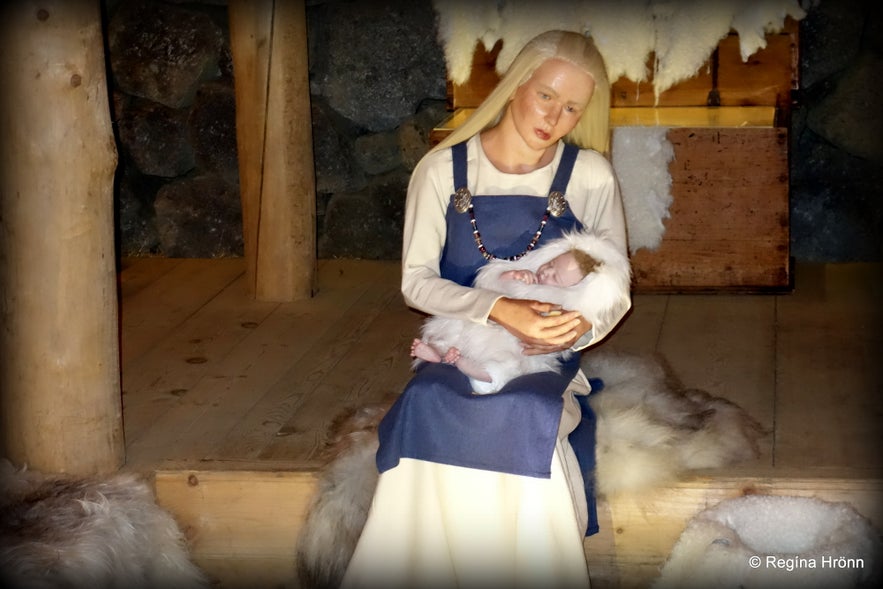
Herjólfur's wife at the Viking exhibition
Hauksbók Landnámu (from the 14th century) tells it differently. It was written by Haukur Erlingsson from Melabók, and Sturlubók which was written by the noted Sturla Þórðarson in the 13th century.
The chapter on Herjólfur goes like this translated into English from old Icelandic: "Herjólfur Bárðarson, the brother of Hallgrímur sviðbálki, first settled the Vestmannaeyjar islands and lived in Herjólfsdalur valley a little inside of Ægisdyr, where there is now scorched lava.
His son was Ormur auðgi, who lived in Ormsstaðir down by the Rock, where everything is now blown away, and he owned the islands all by himself. They are by Eyjasandur, and earlier on there was a fishing station but no activity in the wintertime. Ormur's wife was Þorgerður, the daughter of Oddur, called muns (kaldmunnur - RHR). Their daughter was Halldóra, whom Eilífur Valla-Brandsson married".
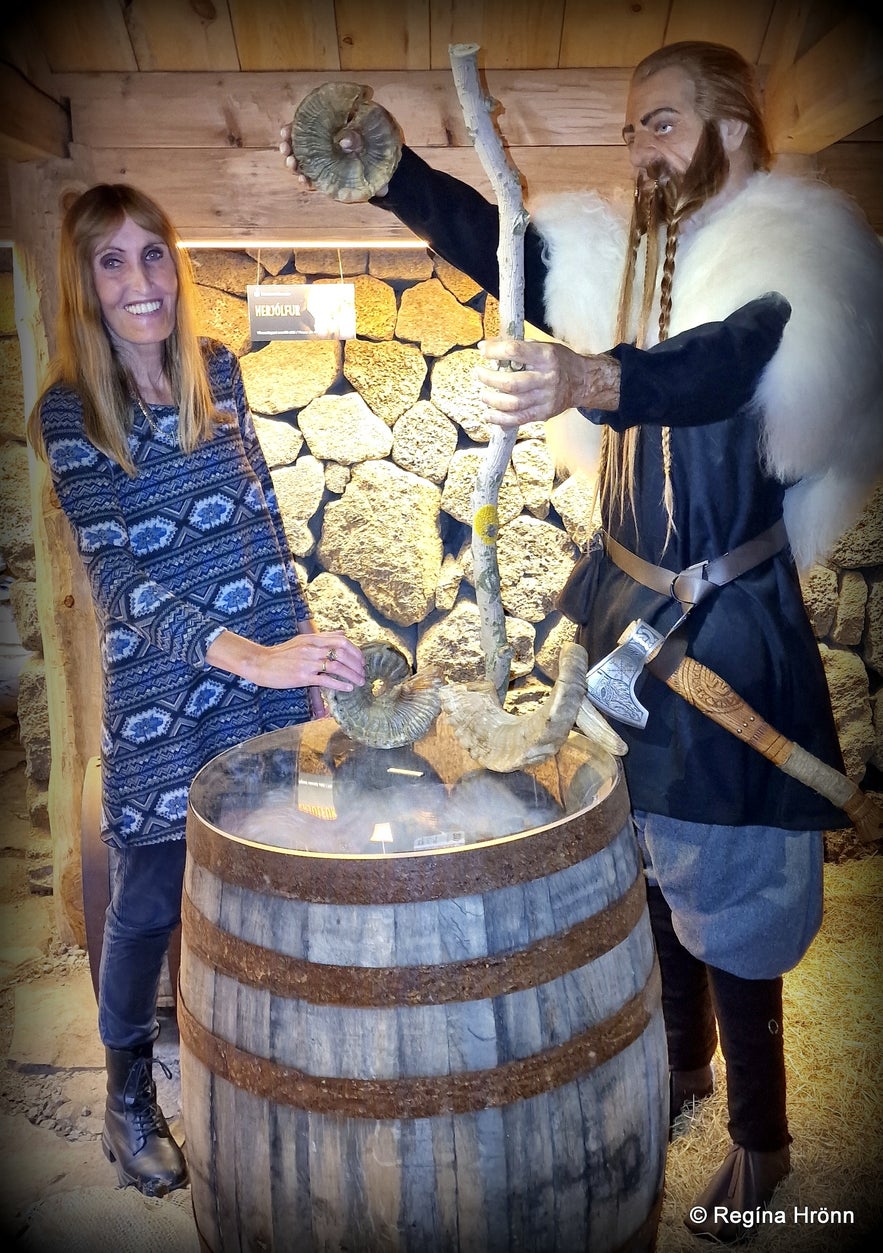
Raising a "glass" with Herjólfur Bárðarson
These are the sources we have from Landnáma. And folklore in Þjóðsögur Jóns Árnasonar - the Collection of Folklore by Jón Árnason, that tells us about Herjólfur's daughter, Vigdís.
And now we have the ruins of what seems to be the settlement farm, but might even predate the settlement of Iceland.
Here in Herjólfsdalur valley was about the only place where fresh water could be found, so it might be a very likely place in which to build one's farm.
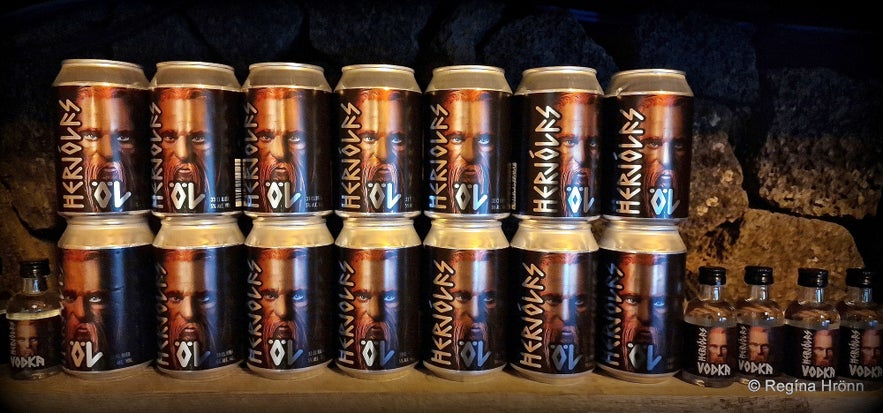
Herjólfur's öl and Vodka
You will meet Herjólfur inside Herjólfsbær town and can raise a glass (horn) with him, be it a glass of beer or a glass of water.
Beer and miniature Vodka bottles with the logo of the Viking exhibition (the stern face of Herjólfur) can be bought at Herjólfsbærinn town.
The beer (öl) is made from water and herbs from Herjólfsdalur valley by Brothers Brewery in the Westman Islands.
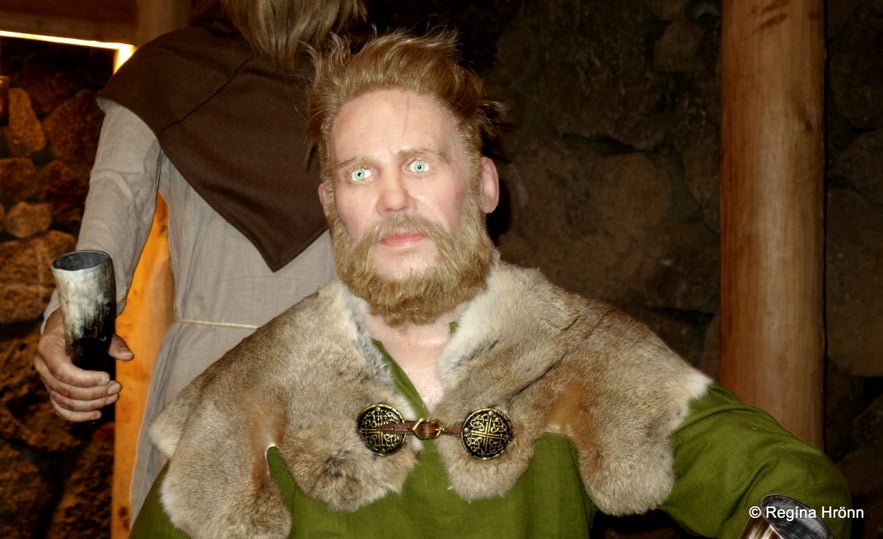 Ubbe, the son of Ragnar Loðbrók
Ubbe, the son of Ragnar Loðbrók
You can also raise a glass with King Haraldur hárfagri and Ubbe, the son of Ragnar Loðbrók at the exhibition and have your photo taken with these great characters from Norwegian history.
Einar is on his way (September 2023) to pick up 3 more characters, amongst them Hrafna-Flóki, the one who gave Iceland a name, and Auður djúpúðga, Iceland's most famous settler woman.
So this is only the beginning and I can't wait to see the new Vikings at the exhibition.
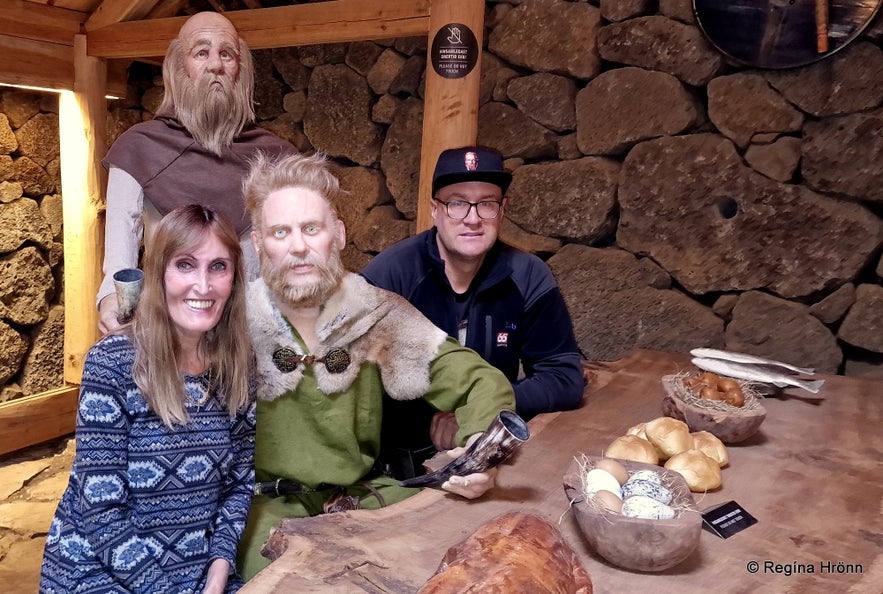 With Einar (Ebbi) the proprietor of the Viking exhibition, Ubbe, and the slave Kormákur
With Einar (Ebbi) the proprietor of the Viking exhibition, Ubbe, and the slave Kormákur
At the Viking Exhibition, you will also meet the wife and children of Herjólfur.
This is a made-up family as we know very little about Herjólfur, but I think it is a great idea and contribution to the story of Herjólfur, whose Saga might have been lost.
In Íslendindabók - the Book of Icelanders where we can trace our ancestry, the name of Herjólfur's wife is unknown and he has only one son.
You will find his wife Freyja by the longfire with their baby girl Ásvör. And his children Flóki and Melkorka.
 The children at Herjólfsbærinn exhibition, Flóki, and Melkorka
The children at Herjólfsbærinn exhibition, Flóki, and Melkorka
There is one account about Herjólfur and Vilborg his daughter in Þjóðsögur Jóns Árnasonar - the Collection of Folklore of Jón Árnason:
"The story goes that in ancient times a man named Herjólfur lived in the valley in Vestmannaeyjar, which has since been called Herjólfsdalur valley.
This valley is sheltered by high mountains on three sides and the opening of the valley is in the south in the direction of the sea on the west side of Heimaey island; Herjólfur's farm was located on the west side of the valley beneath a tall and craggy rocky-mountain.
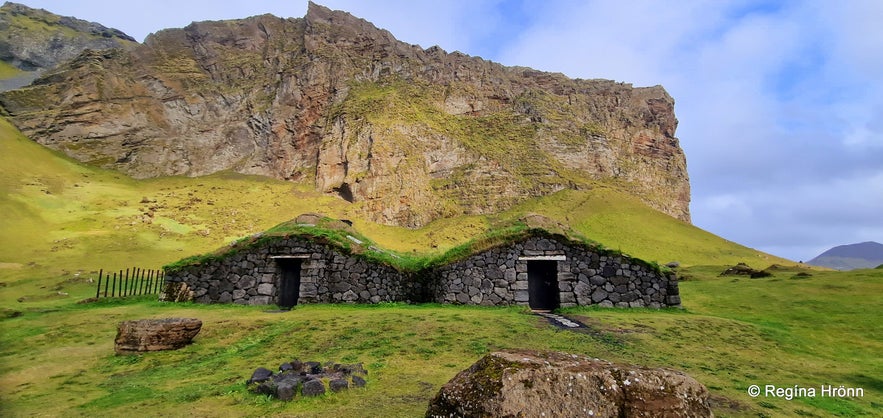 Herjólfsbær and a rocky mountain in Herjólfsdalur valley
Herjólfsbær and a rocky mountain in Herjólfsdalur valley
Herjólfur was the only one of the islanders who had access to a good water source and many people came to the valley to ask him for water, but he didn't want to give them water unless they paid for it.
The story goes that Herjólfur had a daughter named Vilborg. She was of a different temperament than her father and found him to be rigorous in selling the water on his land to his own neighbours.
So she often gave water to their neighbours at night when her father couldn't find out.
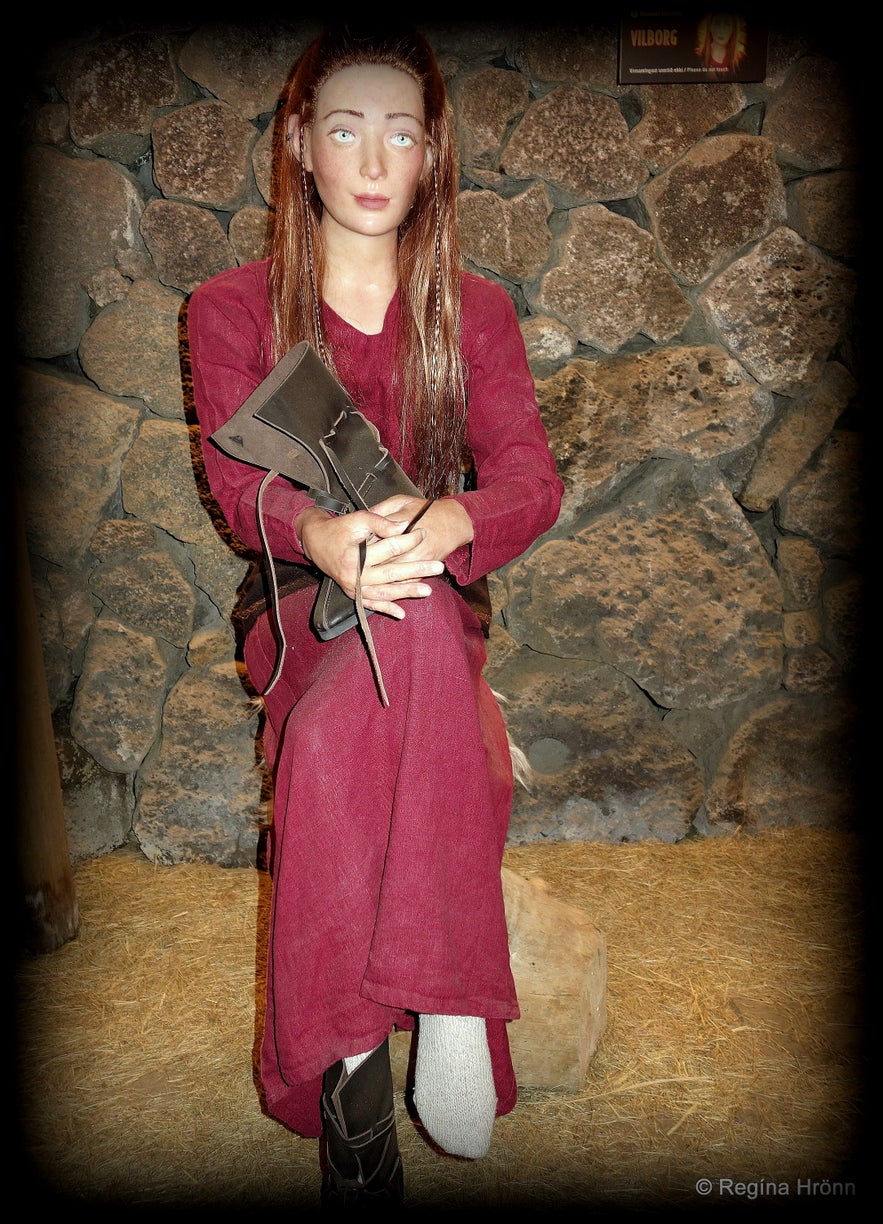
Vilborg Herjólfsdóttir
It happened once that Vilborg was sitting outside close to the farm sewing shoes for herself.
A raven approached her and took one of her shoes and flew off with it.
She was upset at losing her shoe, stood up and followed the raven, but as she was a short stretch from the farm a surprisingly large landslide fell from the mountain and onto Herjólfur's farm, but he was inside the farm and got hit by the landslide.
But Vilborg owed her life to the raven. She had often fed the ravens and they had grown fond of her.
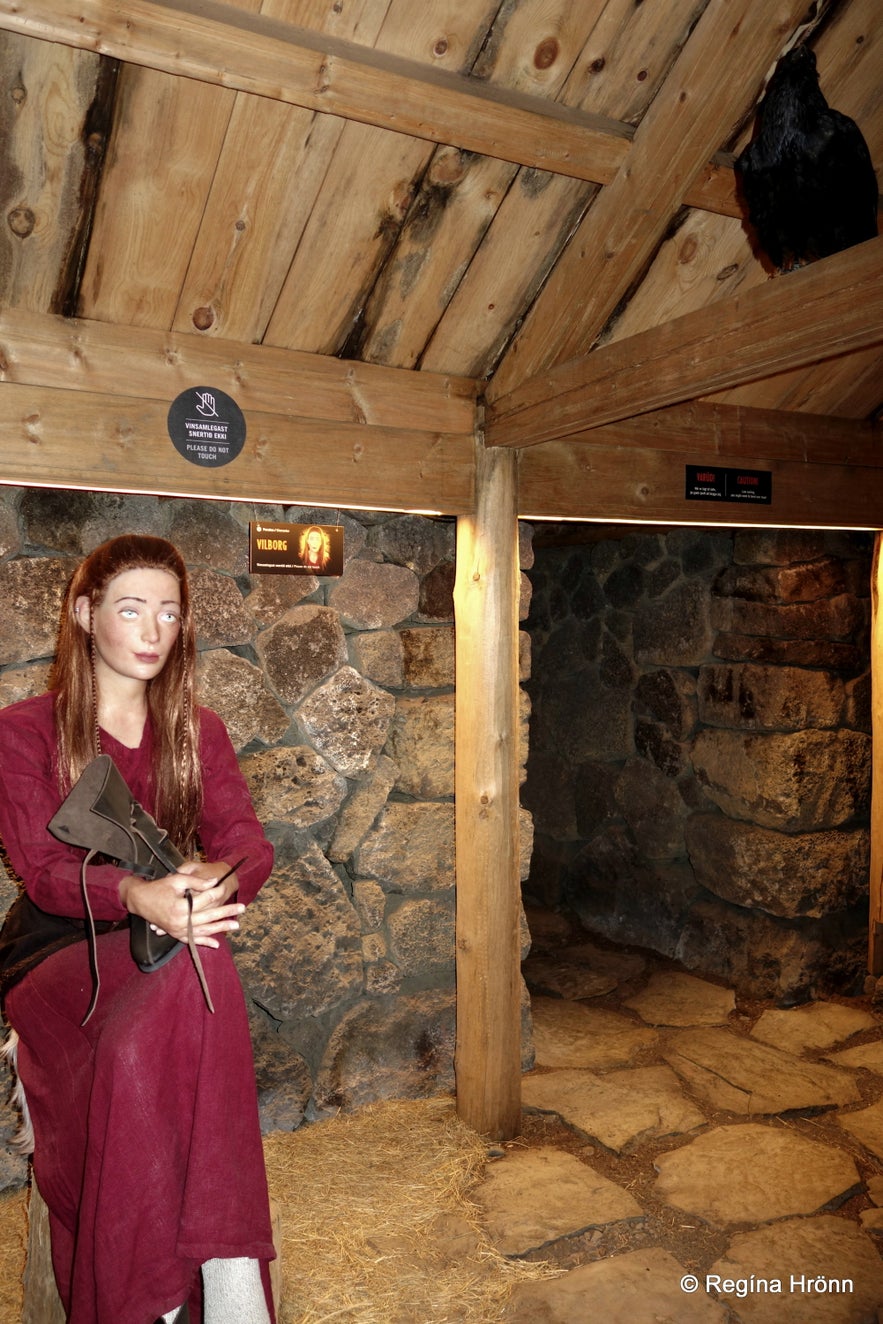 Vilborg and the raven
Vilborg and the raven
Then the story goes that Vilborg built a farm at what was to be called Vilborgarstaðir stead, named the pond south of the farm Vilpa, and instructed that nobody would be harmed from drinking the water from Vilpa, even though it didn't look that tasty.
Allegedly Vilborg was buried in the western part of Vilborgarstaðatúni field - that spot is still called Borguleiði or the grave of Borga (short for Vilborg RHR)
In Herjólfsdalur valley, above the pile of rocks that fell on the farm, there is still a clear water fountain that never dries up even though everywhere else there is a water shortage.
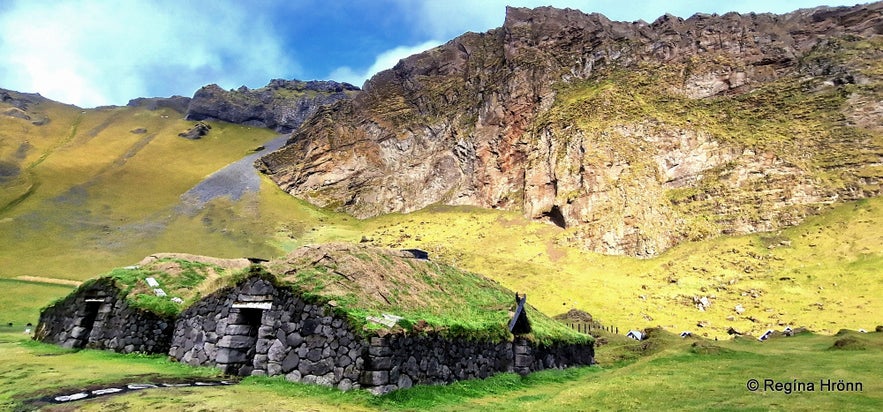
Herjólfsdalur valley and Herjólfsbærinn
A short distance from the pile of rocks there is also a pond and on the east side of the pond there is a watercourse, which looks like it is man-made. This mouth of the watercourse can be seen where it runs into the pond.
The pond south of Vilborgarstaðir stead is still called Vilpa and it is a common water source for the farms closest to it.
(Translated into English from Þjóðsögur Jóns Árnasonar Volume II, page 85 - Herjólfur og Vilborg).
Vilpa was filled up in 1972 after a very sad accident when a child drowned in it, and in 1973 it went under lava from the volcanic eruption in Mt. Eldfell.
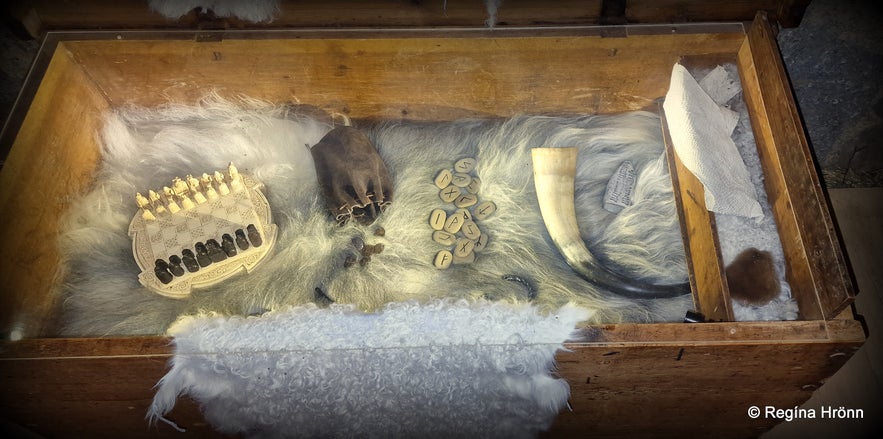 At the Viking Exhibition
At the Viking Exhibition
Now, let's hear what Einar has got to say about his Viking exhibition and the inhabitants and guests at Herjólfsbær town. He and his wife are the proprietors and much planning and money have gone towards the creation of the Viking exhibition.
A couple of years ago when the hypothetical settlement farm was mouldering they thought it was about time to do something productive about this beautiful reconstruction of the old farm and tell the story of Herjólfur.
When the farm came into the possession of Vestmannaeyjabær they introduced their idea and it was approved.
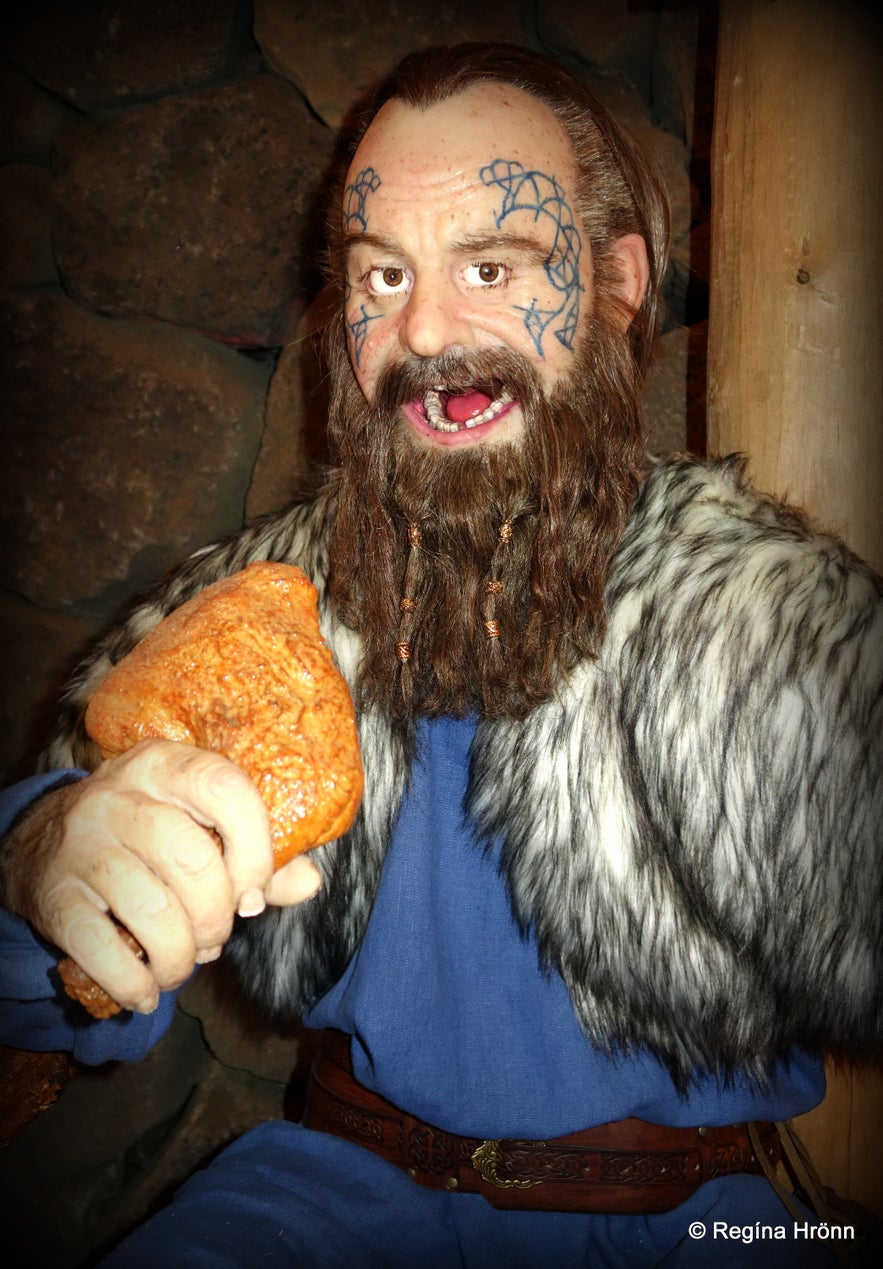 Haraldur hárfagri
Haraldur hárfagri
Einar and his family plan to add one new character each year from this time in Viking history. They do so in collaboration with Grunnskóli Vestmannaeyja - the Elementary School of the Westman Islands, to spark the children's interest in the Viking period of Iceland.
The children are asked to find one famous Viking from this period in Iceland's history (850-950) and present him (or her), his story, what he looked like, and what made him famous.
The family will then choose one character each year to add to the Viking exhibition.
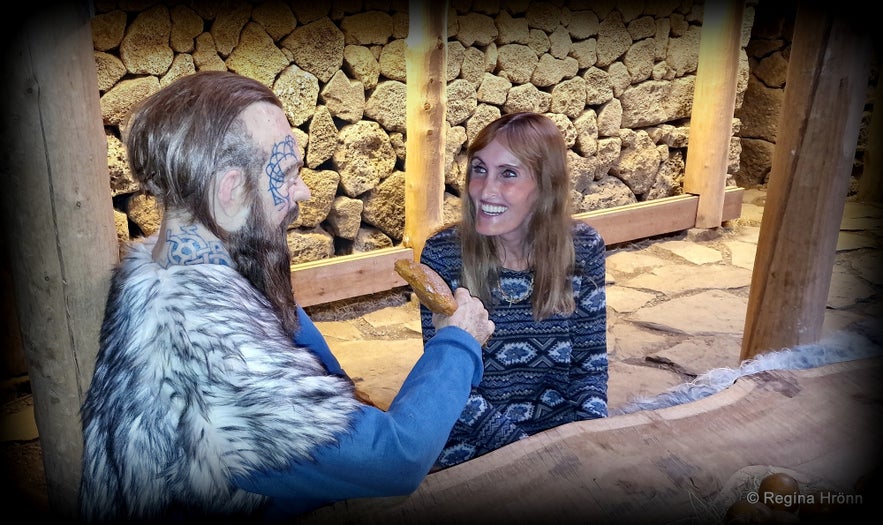 Having a laugh with King Haraldur hárfagri
Having a laugh with King Haraldur hárfagri
The newest addition (I visited in September 2023) is the Norwegian King Haraldur hárfagri. And here by the long table, you will also find Ubbe, the son of Ragnar Loðbrók.
King Harald ruled over Norway for many decades and he is the reason why many Norwegians fled Norway and settled in Iceland. So it is only fitting to have him at the long table as he was one of the reasons for the exodus from Norway to Iceland.
He demanded high taxes and many a Norwegian wasn't willing to pay him taxes. There are many reasons why the settlers of Iceland left, but many had disputes with King Harald.
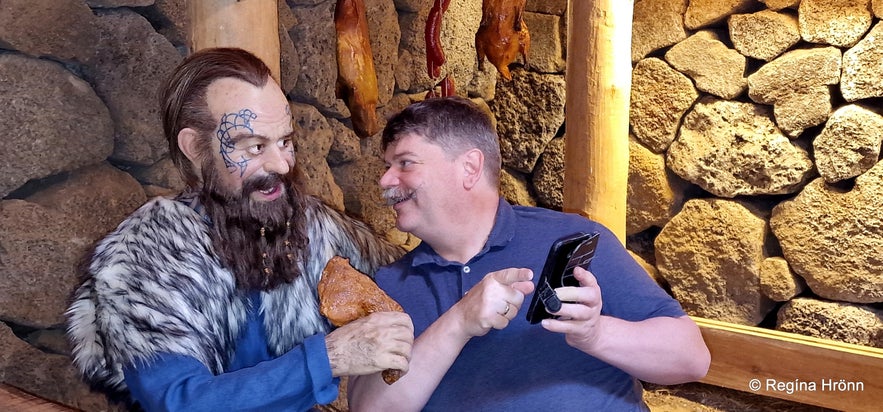 My husband showing King Haraldur hárfagri something funny on his mobile phone ;)
My husband showing King Haraldur hárfagri something funny on his mobile phone ;)
Of course, these are made-up characters in Herjólfsbær town and you can read the story of each character in the family and household in a leaflet you can take with you around the exhibition.
But the idea is that you will not only learn about Viking history but also have fun at Herjólfsbær town.
We get most of our knowledge about these times from the Sagas and if a Saga about Herjólfur was written down it is now lost, like many of invaluable sagas. But at least we have the story of Vilborg that did not get lost in oral history. So we gather that there must have been a Saga as well.
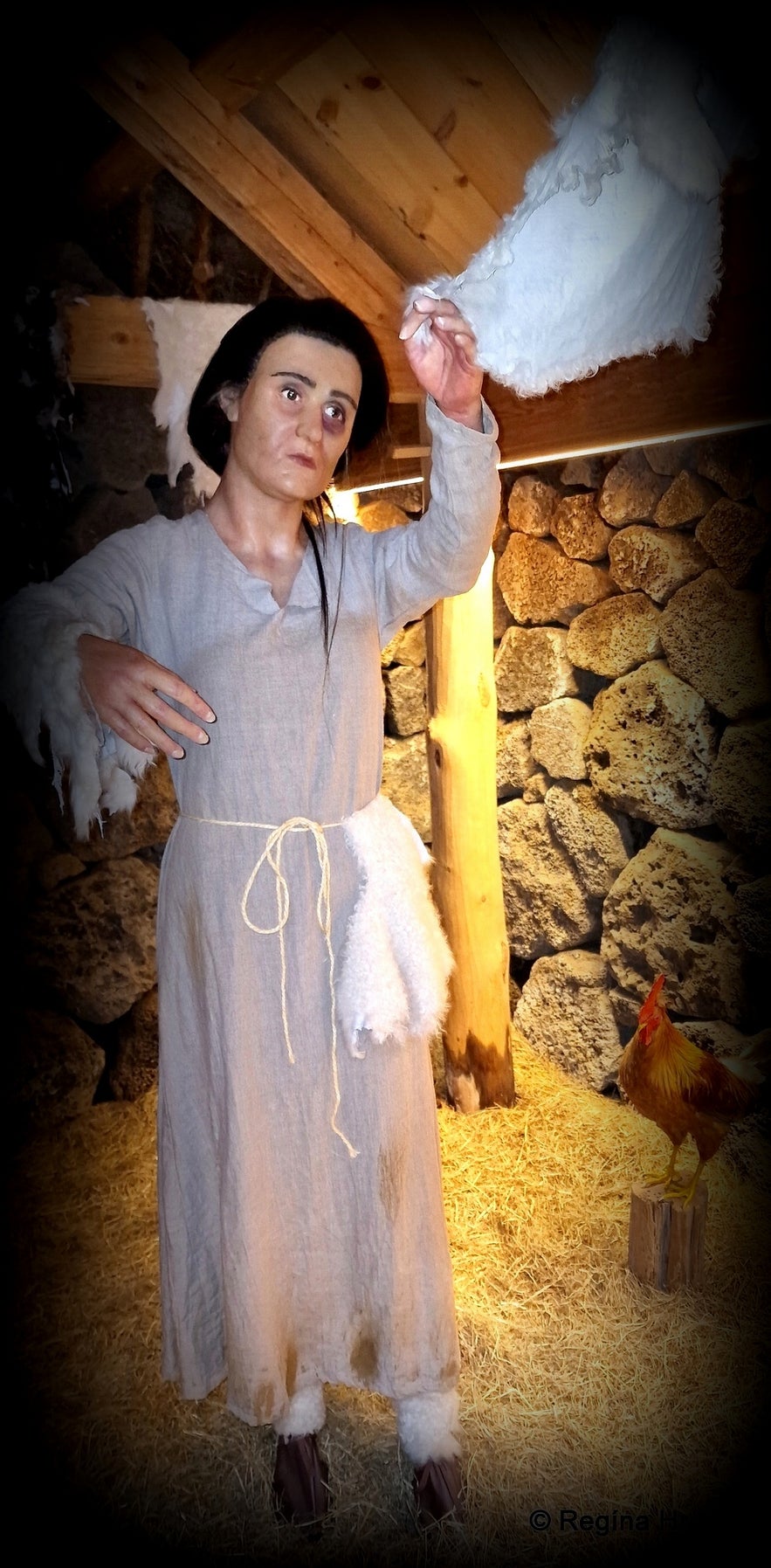 The slave woman Imma in Herjólfsbær town
The slave woman Imma in Herjólfsbær town
I am a great fan of the Sagas and have read all 40+ Sagas and Landnáma, and seek out the locations where they took place on my travels around Iceland.
We know that the Vikings brought with them Irish slaves and the Westman Islands - Vestmannaeyjar got their name from the Irish slaves who were called Vestmenn.
The slaves in question had in 875 killed Hjörleifur, the foster brother of Ingólfur Arnarson, our first settler, and fled to the Westman Islands with the women. Ingólfur chased them down and killed them all and the name stuck to the Westman Islands (Landnáma chapter 7).
See also my travel-blog about Ingólfur and Hjörleifur.
 Hallveig and Ingólfur Arnarsson, the first settlers of Iceland at the Saga Museum in Reykjavík
Hallveig and Ingólfur Arnarsson, the first settlers of Iceland at the Saga Museum in Reykjavík
I think that it is a fun idea to add many characters to the exhibition and create a story like this, the hypothetical family of Herjólfur.
Einar and his wife, Íris Sif researched the Sagas and Viking museums and talked to historians who helped them make the interiors of the Viking exhibition and the characters as accurate as possible. And I think that they did a marvellous job.
They have now added colour to Herjólfsbær town, which for so many years was just an empty house made of rocks, turf, and wood. Now it is filled with life, sounds, and colourful characters.
A highly recommended visit and kudos to the proprietors, Einar Birgir, Íris Sif, and their children Aþena Rós and Baltasar Þór for a job well done :)

For opening hours and entrance fees check out their website Herjólfstown - the First Viking House in Iceland.
I adore such old houses and I think they add a magical touch to Iceland. Those of you, who have read my travel-blog, know then I have written travel-blogs about almost all of the remaining turf houses in Iceland.
Herjólfur certainly set his mark on the Westman Islands and on the islands you will find Herjólfsdalur valley, Herjólfshöllin football stadium, Herjólfsgata street, and the ferry Herjólfur.
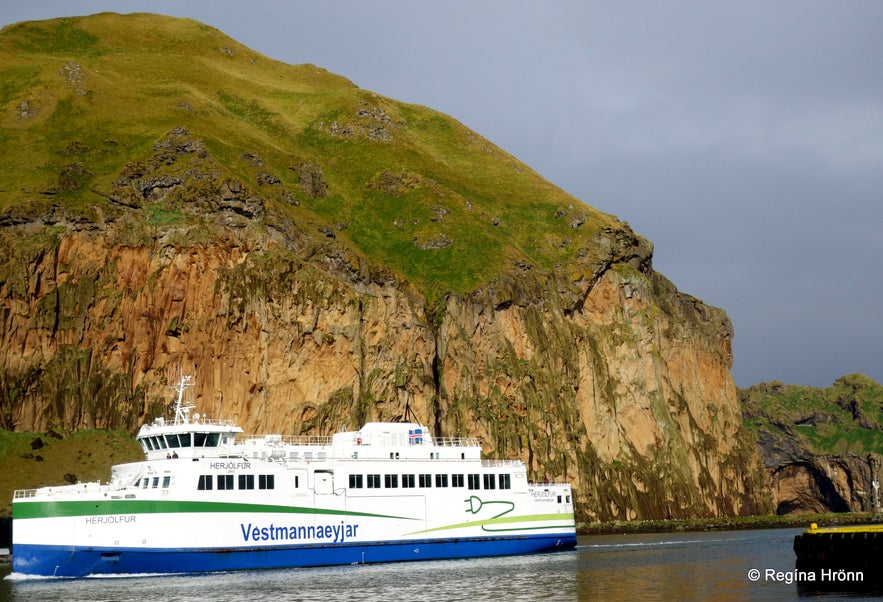 The ferry Herjólfur sails to the Westman Islands
The ferry Herjólfur sails to the Westman Islands
I have written a couple of other travel-blogs about Vestmannaeyjar - the Westman islands for those of you who are interested in exploring the island:
The Westman Islands of Iceland - the Settler, the Beautiful Stave Church & more interesting Things
The Westman Islands - Eldfell volcano & Eldheimar - the Pompei of the North in Iceland
The Westman Islands in Iceland - the Puffin and Volcano Tour - Local Guidance
Visiting the volcanic Westman Islands and hiking on top of a warm volcano, checking out the adorable puffins, visiting the Viking in Herjólfsbær town, and seeing a house dug out from the ashes from the volcanic eruption makes for a very memorable visit.

Have a lovely time in the beautiful Westman Islands :)
Ref.:
Landnáma - the Book of Settlements
An interview with Einar on location
Eyjafréttir: Herjólfsbær vaknar til lífsins
Inne ciekawe blogi
Gorące źródła - Hrunalaug
Z czego słynie Islandia? Zorza polarna, wulkany, lodowce, gejzery i oczywiście gorące źródła! Hruni, a właściwie Hrunalaug to gorące źródło w malowniczym otoczeniu, znajdujące się w w pobliżu miejscowCzytaj więcejPolowanie na Zorzę
Zobaczenie zorzy polarnej to marzenie wielu osób. Zorza jest dla mnie czymś magicznym i niepowtarzalnym, zachwyca mnie za każdym razem. Czy faktycznie tak ciężko ją dostrzec? Otóż nauczyłam się, że niCzytaj więcejO pisaniu na Guide to Iceland
Mam wrażenie, że na Islandii bardzo wiele rzeczy staje się jasnych. Chodzi o podejście do świata, do własnej osoby, do innych, którzy realnie wpływają na Twoje życie. Islandia zmusza swoją surowościCzytaj więcej

Pobierz największą platformę turystyczną na Islandii na telefon i zarządzaj wszystkimi elementami swojej podróży w jednym miejscu
Zeskanuj ten kod QR za pomocą aparatu w telefonie i naciśnij wyświetlony link, aby uzyskać dostęp do największej platformy turystycznej na Islandii. Wprowadź swój numer telefonu lub adres e-mail, aby otrzymać wiadomość SMS lub e-mail z linkiem do pobrania.















